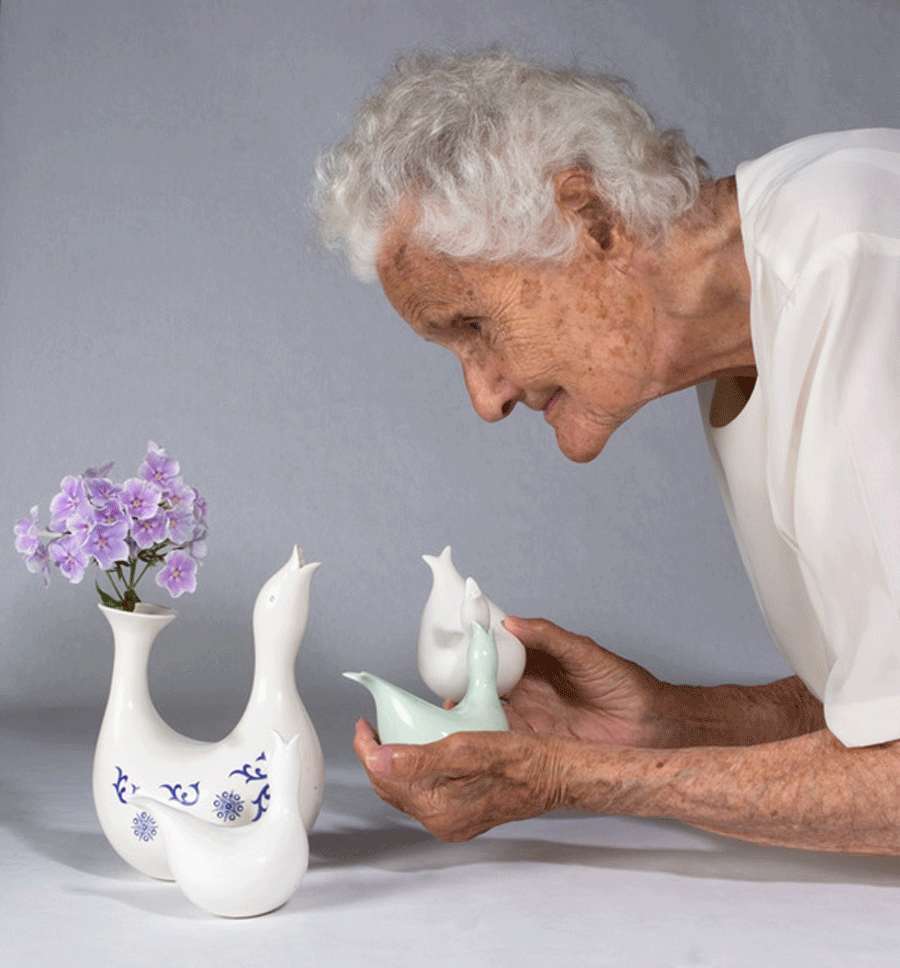
In an era dominated by rational, linear forms—and male players—Eva Zeisel brought warmth, organic shapes and a sense of humor into mid century homes through her designs.
A ceramist and designer, the Hungarian-born Eva Zeisel had a long and celebrated career. She has the distinction of being the first woman to have an exhibition at the Metropolitan Museum of Art (MoMA) in New York and you can still find her designs today!
Life in the Tumultuous 20th Century
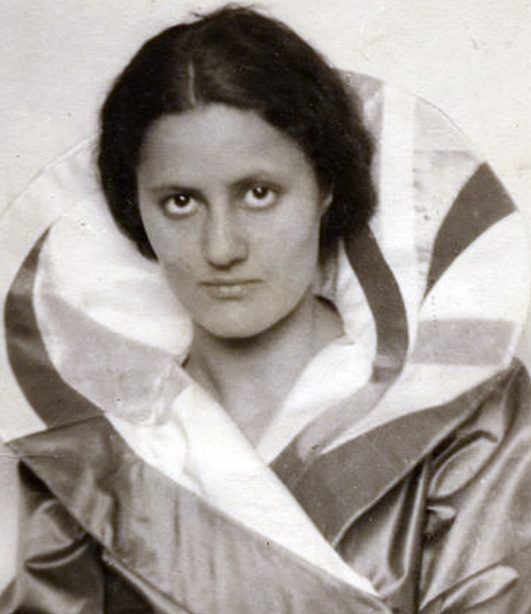
Born Eva Amalia Striker to a wealthy, intellectual family in Budapest in 1906, Eva trained for three semesters to be a painter before pursuing ceramics instead and receiving a journeyman’s certification. After an apprenticeship, her ceramics, particularly her tableware, garnered recognition. Before long she was working in Budapest, next in Schramberg and Berlin, Germany and then in Moscow.
While working in Moscow, she was imprisoned on false charges of conspiring to assassinate Stalin and was released without explanation the following year in Austria, in 1937. After Nazi Germany invaded Austria in 1938, she left for Great Britain on the last train out of the country. While there, she reunited with someone she had met in Berlin, Hans Zeisel. The two married, and they emigrated to the US.
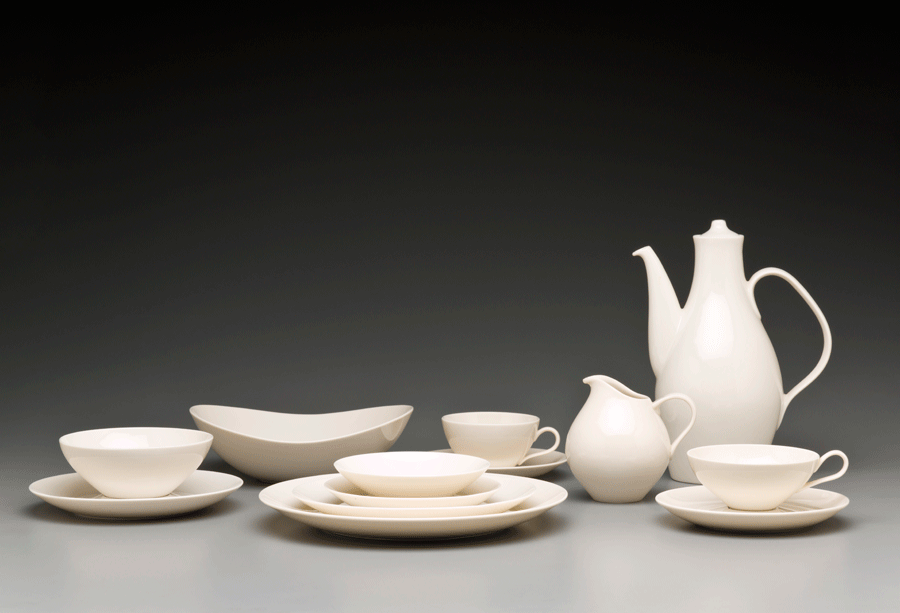
The Museum Collection
In 1940, the Metropolitan Museum of Art (MoMA) in New York commissioned Eva Zeisel to design modern tableware for an exhibition that could then be produced commercially. Zeisel accepted and by 1946, her all-white tableware exhibition was complete, showcasing her simplified, curvaceous designs entitled “Museum.”
A lack of ornamentation was a noticeable departure from the tableware of the time, and World War II’s long shadow meant it could not be commercially produced until three years later in 1949. But once it was produced commercially, it became quite the hit and continued to be produced decades after its initial debut. Eva credited the “Museum” line for establishing her reputation in the United States.
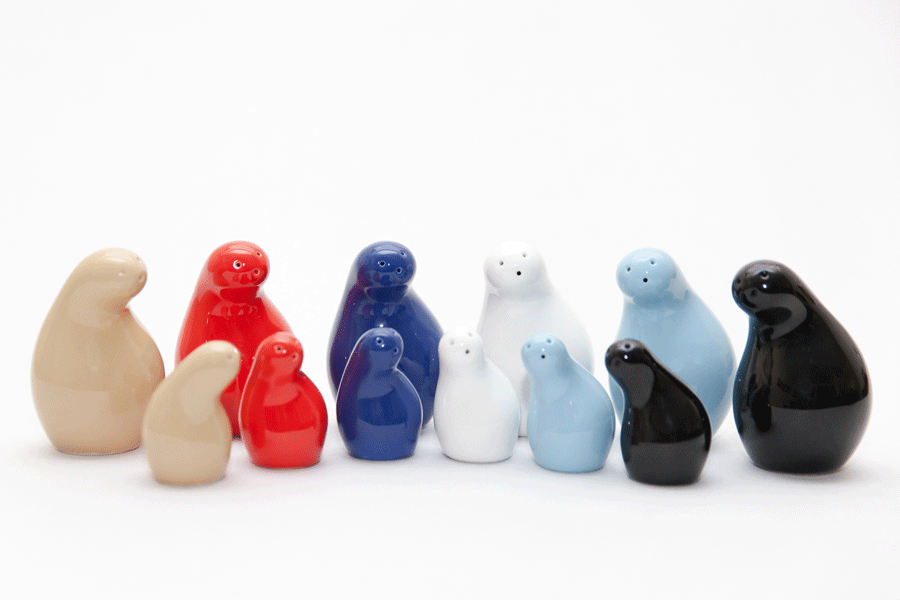
Eva Zeisel’s Warm Legacy
Rather than angular shapes, Zeisel drew on organic, rounded forms, once saying that: “I don’t create angular things. I’m a more circular person—it’s more my character….even the air between my hands is round.”
Her designs often showed things in relation to one another, resembling families, like the nestling shapes of the Town & Country salt and pepper shakers evoking a mother and child. Zeisel noted that modern design could be “too cold,” and endeavored to warm up the minimalist simplicity of modernity with a sense of humor. Her designs such as figural vases and a belly button wall partition convey organic, simple shapes in a lighthearted, colorful way.
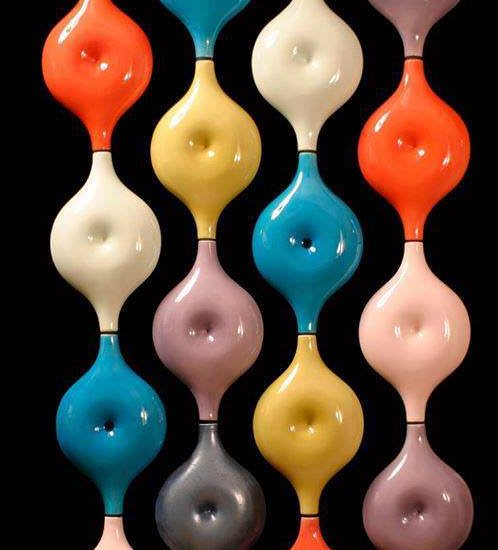
Zeisel described her career as a “playful search for beauty,” and she also designed furniture, most notably a table with a scrolling base and a chair. She continued to work from the ’40s up until her death in 2011, at the age of 105.
The Cooper-Hewett National Design Museum awarded her a Lifetime Achievement Award in 2005, and her work can be found in the permanent collections of the British Museum, the Metropolitan Museum, the Museum of Modern Art and the Victoria and Albert Museum. You can still purchase some of her famous housewares for yourself at Eva Zeisel Originals.
Learn more about another famous mid mod woman, and of course, don’t forget to follow us on Instagram, Facebook and Pinterest for more Atomic Ranch articles and ideas!

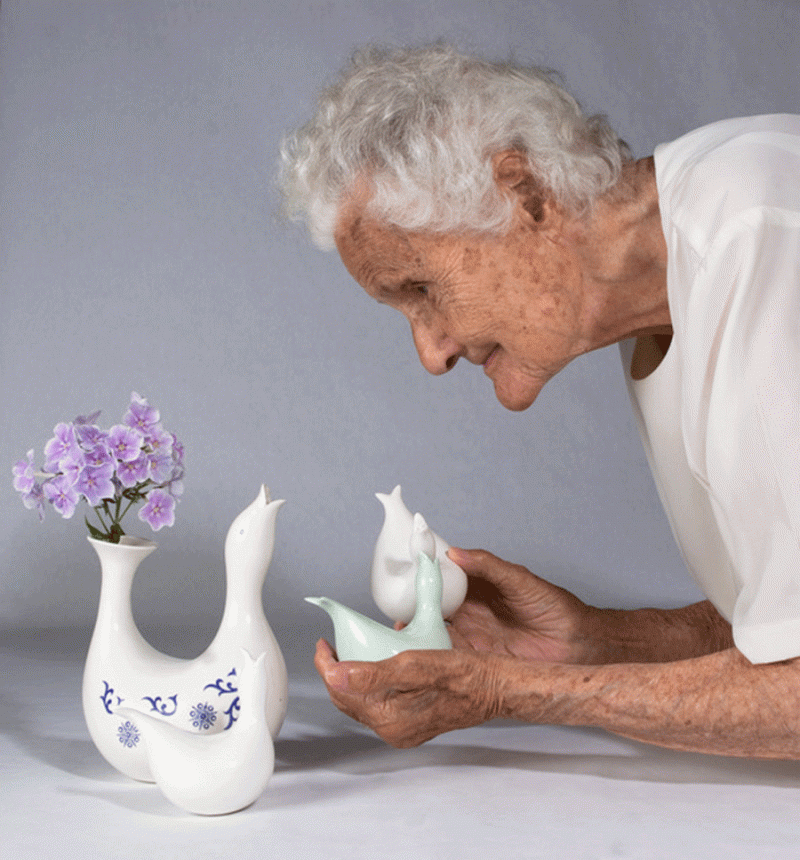











1 comment